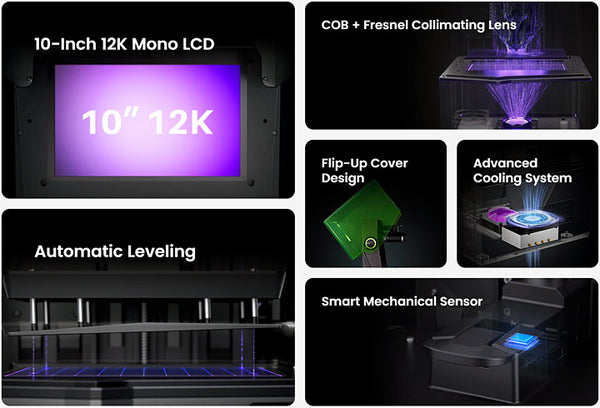Need Help?Contact Us

3D printing has come a long way, revolutionizing industries from manufacturing to healthcare, and even making its mark in the hobbyist community. As we step into 2024, the market is brimming with innovative 3D printers that offer exceptional quality, speed, and versatility. Whether you're a professional or a hobbyist, here are the top 3D printers of 2024 that are worth your investment.
Overview: The Creality K1 Max is a standout for its large build volume and robust feature set, making it ideal for both professionals and serious hobbyists. Known for its reliability and precision, this printer can handle complex projects with ease.
Key Features:
Pros:
Cons:

Overview: The Creality Ender-3 series has been a favorite among hobbyists, and the V3 and V3 Plus continue this legacy with improved features and reliability. These models are perfect for beginners and experienced users alike.
Key Features:
Pros:
Cons:

Overview: The Elegoo Neptune series is known for its reliability and affordability. The Neptune 3 Pro and Neptune 4 Pro are great options for users who want high-quality prints without breaking the bank.
Key Features:
Pros:
Cons:


Overview: The Elegoo Saturn 4 Ultra is a resin printer that offers high-resolution prints, making it ideal for detailed models and professional prototypes. Its large build volume and reliable performance make it a top choice in the resin category.
Key Features:
Pros:
Cons:

Overview: The Bambu Lab X1CC is known for its cutting-edge technology and high-quality prints. This printer is designed for users who need precise and reliable performance, making it suitable for both professionals and enthusiasts.
Key Features:
Pros:
Cons:
Choosing the right 3D printer depends on your specific needs and budget. The Creality K1 Max and Elegoo Neptune 4 Pro offer excellent value for large projects, while the Elegoo Saturn 4 stands out for high-resolution resin printing. For those seeking advanced features and precision, the Bambu Lab X1CC is a top contender. No matter which model you choose, these 3D printers represent the best of what 2024 has to offer, ensuring you can bring your ideas to life with ease and accuracy.


